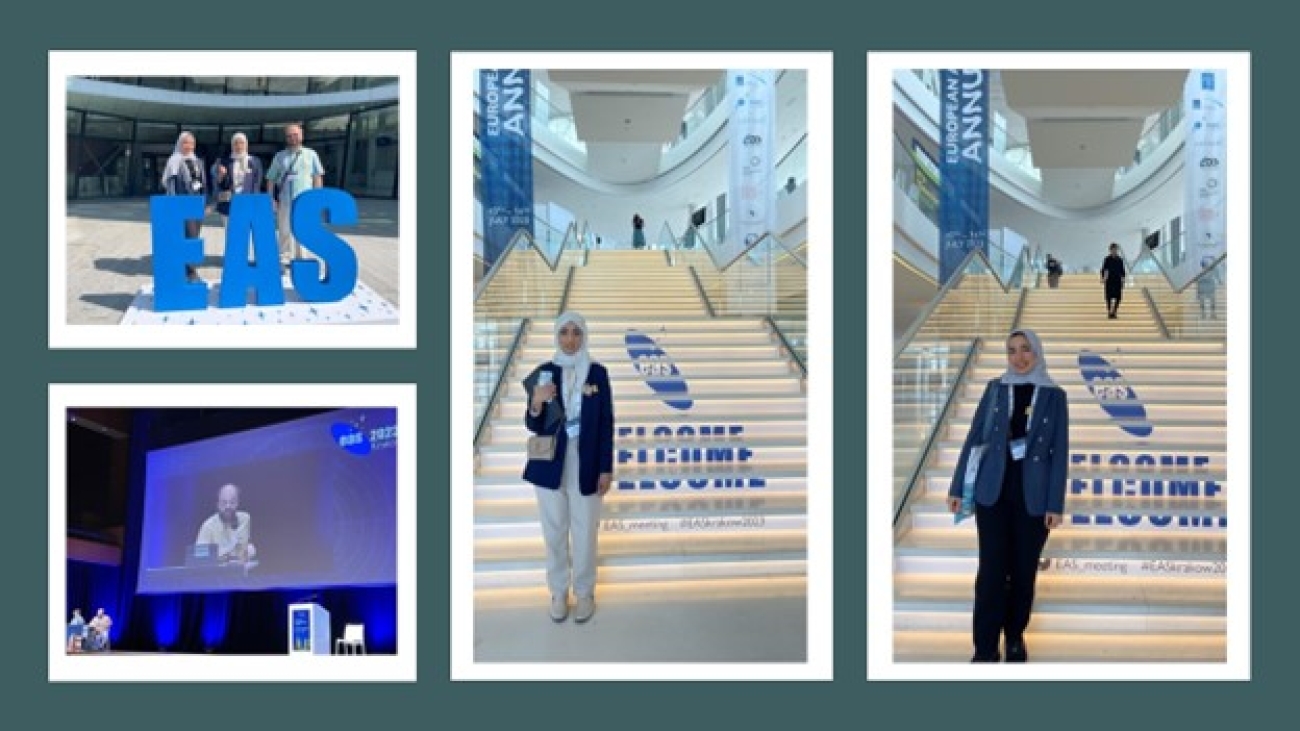The meeting covered 13 symposiums, including ones relevant to what we do at SAASST. Some of them are "Machine Learning Prospective in Astrophysics: Challenges, Limitations, Failures, and Potentials," "Stellar Interactions: Contact Binary Stars and Common-Envelope Evolution," and "From Stellar Variability to Stellar Structure and Evolution." Attending the many sessions under each symposium provides valuable insights and enhances our expertise in our Space AI Lab, High Energy Astrophysics Lab, and other relevant labs.
Dr. Antonious Manousakis chaired a session titled "From Dormant to Ultra-luminous Compact Objects in X-ray Binaries." At the same time, Aisha Al-Owais, a research assistant at the SAASST Space Artificial Intelligence Lab, participated in a work titled "Deep-Learning Based Solar Burst Detection in Radio Astronomy: A Proposed Model." Moreover, Fatima Al-Khateri, a planetarium scientific guide at SAASST, contributed with her work on the "Spectral Classification of Stellar X-ray sources in the Small Magellanic Cloud (SMC)," demonstrating SAASST's expertise in this area. Mr. Ammar Abdulla, from the SAASST Sharjah Optical Observatory, also participated virtually with a poster titled "Sharjah Optical Observatory: public outreach in the UAE."
Participating in conferences like EAS 2023 keeps SAASST at the forefront of the latest advancements in science and technology. This ensures that we continue to make significant contributions to astronomy and space sciences.



